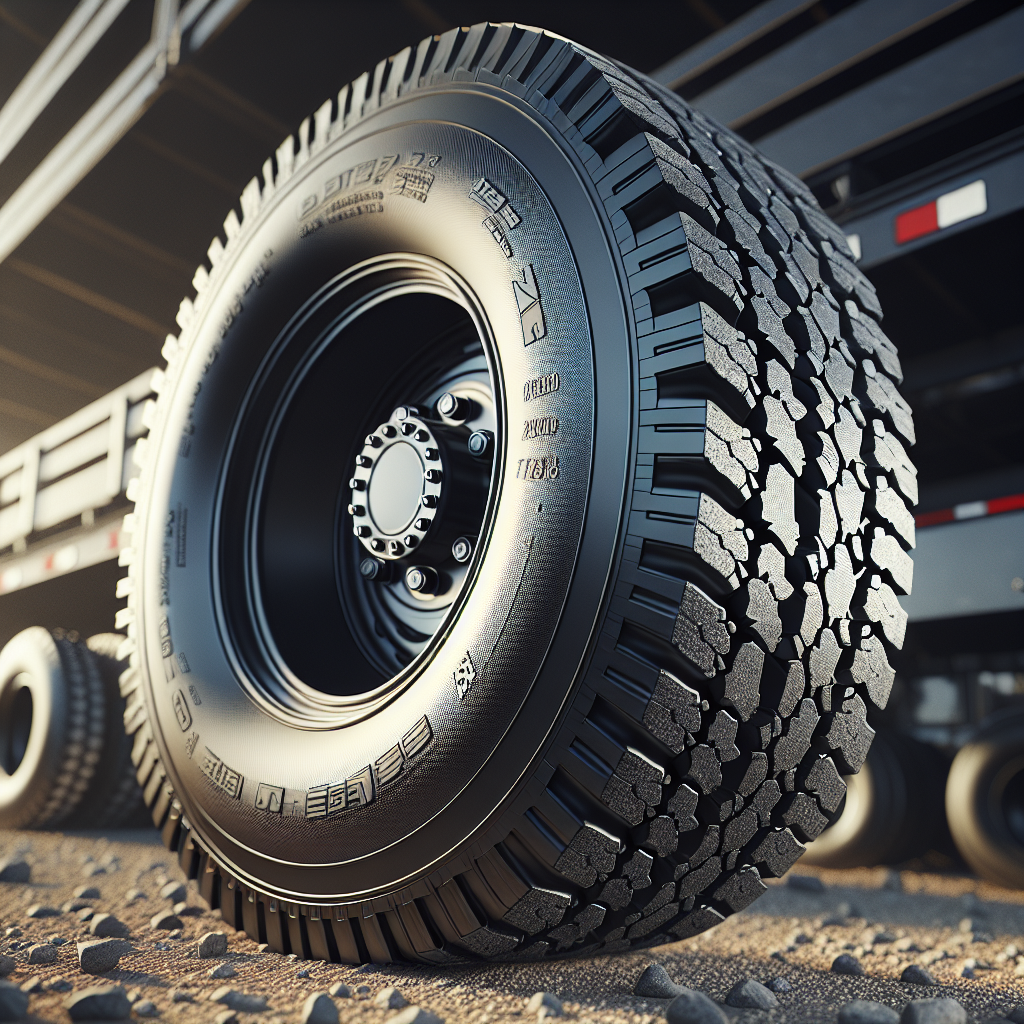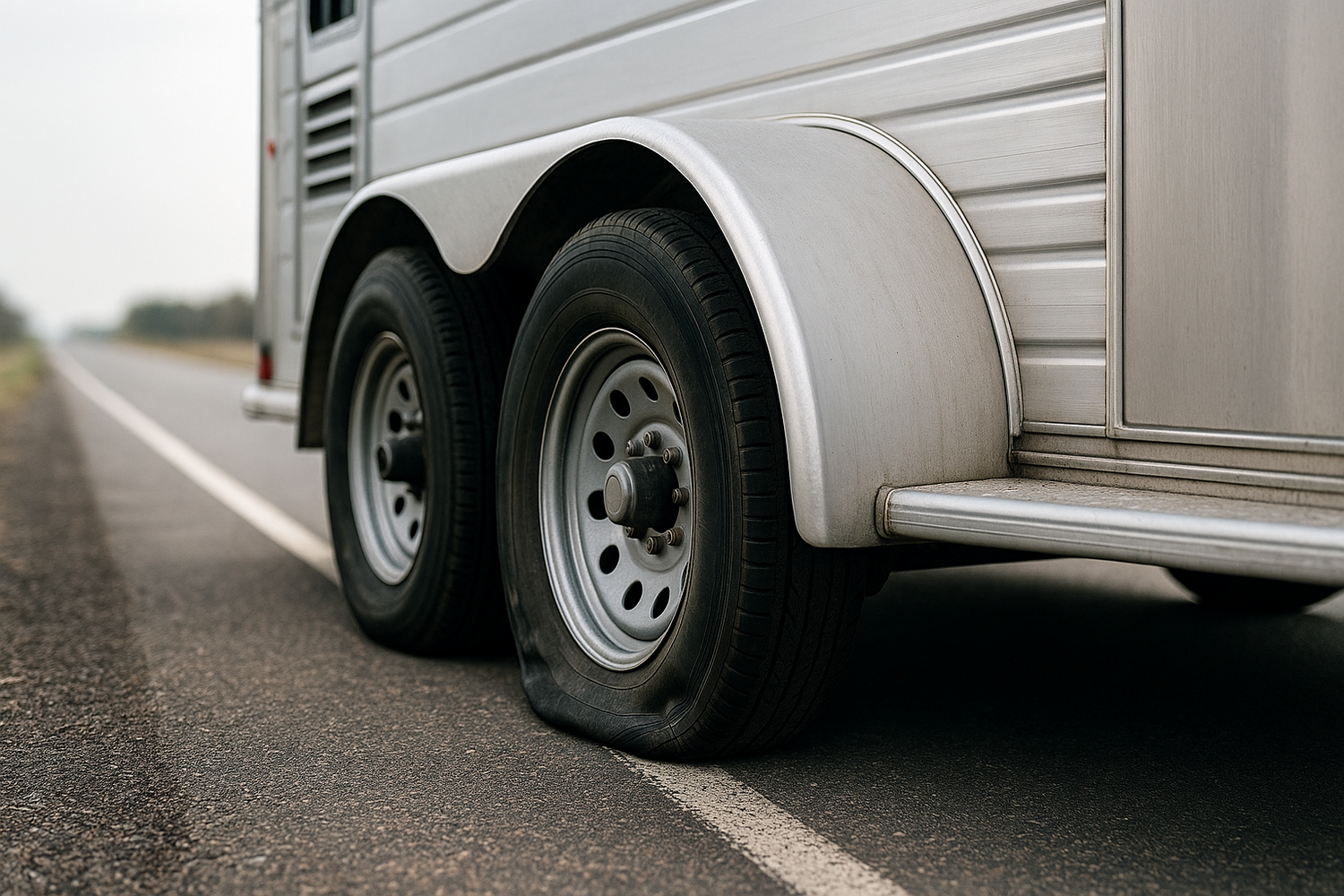When it comes to ensuring your trailer is equipped with safe and reliable tires, understanding tire ratings and specifications is crucial. Trailer tires are specifically designed to carry heavy loads, and their ratings reflect their performance capabilities under various conditions. The primary factors that determine how trailer tires are rated include:
- Load Capacity: This is a critical rating that indicates the maximum weight a tire can safely support. It is essential to choose tires that can handle the weight of the trailer and its cargo.
- Tread Patterns: The design of the tire tread affects traction, stability, and handling. Different patterns are optimized for various terrains and weather conditions.
- Speed Rating: This denotes the maximum speed at which the tire can operate safely. It's vital to ensure that your trailer tires are rated for the speeds you intend to travel.
- Construction Type: Most trailer tires are either bias-ply or radial. Bias-ply tires are usually more durable, while radial tires offer better handling and fuel efficiency.
By understanding these ratings, you can make informed decisions about your trailer tire purchases and enhance your towing experience. Tow with peace of mind, knowing that trailerwatchdog is standing guard.
Key Factors in Trailer Tire Load Capacity

The load capacity of a trailer tire is one of the most significant factors in determining its suitability for your specific towing needs. Several key elements contribute to this capacity:
- Load Index: Each tire comes with a load index number that corresponds to its maximum load capacity. This number is crucial when selecting tires for your trailer, as it ensures they can safely handle the weight.
- Inflation Pressure: Proper inflation is vital for maintaining load capacity. Under-inflated tires can lead to overheating and blowouts, while over-inflated tires may result in poor traction and uneven wear. Always follow the manufacturer's recommended inflation levels.
- Tire Size: The size of the tire, indicated by a series of numbers and letters (e.g., 205/75R15), also affects load capacity. Larger tires often support higher loads, but it’s essential to ensure they are compatible with your trailer.
- Type of Load: Understanding the distribution of weight on your trailer is critical. Uneven weight distribution can lead to increased strain on certain tires, potentially exceeding their load capacity.
When selecting trailer tires, it's essential to consider these factors to ensure safe towing and prevent potential failures on the road.
The Importance of Tread Patterns for Trailers
The tread pattern of a trailer tire plays a crucial role in its overall performance, safety, and longevity. Understanding the significance of tread patterns can help you make informed choices for your trailer:
- Traction: Tread patterns are designed to provide optimal traction on various surfaces. A well-designed tread helps in gripping the road effectively, especially during wet or slippery conditions, reducing the risk of skidding and improving overall safety.
- Water Dispersion: Effective tread patterns incorporate channels and grooves that facilitate water dispersion. This feature helps prevent hydroplaning, allowing the tires to maintain contact with the road, which is particularly important when towing heavy loads.
- Tread Wear: The design of the tread can also influence how evenly the tire wears over time. Tires with optimized tread patterns promote uniform wear, extending the tire's lifespan and reducing the need for premature replacements.
- Noise Reduction: Certain tread designs can minimize road noise, providing a more comfortable towing experience. This aspect may not seem critical, but it can significantly enhance the overall driving experience during long journeys.
Choosing the right tread pattern is essential for ensuring your trailer operates efficiently and safely across different driving conditions.
How to Interpret Trailer Tire Markings

Understanding how to interpret trailer tire markings is vital for ensuring safety and compliance with towing regulations. These markings provide critical information regarding the tire's specifications, performance capabilities, and usage guidelines. Here’s a breakdown of common markings you’ll encounter:
- Load Index: This number indicates the maximum load a tire can safely carry when properly inflated. For instance, a load index of 1,500 means the tire can support 1,500 pounds. Always compare this figure with your trailer’s weight to ensure compatibility.
- Tire Type: Trailer tires are often marked with the letters "ST" (Special Trailer) to denote that they are specifically designed for trailer use. These tires have unique construction features that differentiate them from regular passenger car tires.
- DOT Code: This code signifies that the tire meets the Department of Transportation’s safety standards. The last four digits of the code indicate the week and year the tire was manufactured, helping you determine the tire's age and its potential degradation over time.
- Pressure Ratings: Tires will indicate their maximum inflation pressure, typically measured in PSI (pounds per square inch). Maintaining the correct pressure is crucial for optimal performance and safety.
- Treadwear Indicators: Many tires feature small grooves in the tread that serve as wear indicators. When the tread wears down to these indicators, it’s a clear sign that the tire needs to be replaced.
By familiarizing yourself with these markings, you can ensure that you are using the correct tires for your trailer, promoting safety and enhancing the longevity of your equipment.
Comparing Trailer Tire Types for Optimal Performance

When it comes to selecting the right tires for your trailer, understanding the different types available can significantly impact performance and safety. Each type of trailer tire is designed with specific features tailored for various applications. Here’s a comparison of the most common types:
- Radial Tires: Radial tires are constructed with layers of fabric that run perpendicular to the tread. This design offers enhanced flexibility and improved traction, making them ideal for long-distance towing. They also provide better heat dissipation, leading to reduced tire wear and greater fuel efficiency.
- Bias Ply Tires: Bias ply tires have layers of fabric that crisscross at an angle. While they typically offer a sturdier sidewall, they may not provide the same level of performance or longevity as radial tires. These tires are often more affordable and can be suitable for lighter loads or infrequent use.
- Special Trailer (ST) Tires: Designed specifically for trailers, ST tires are built to handle the unique demands of towing. They feature a stiffer sidewall to support heavy loads and minimize sway. ST tires are recommended for trailers, as they offer better load capacity compared to regular passenger tires.
- All-Terrain Tires: If your trailer is used for off-road applications, all-terrain tires can provide the necessary grip and durability. These tires are designed with deeper treads and reinforced sidewalls, making them suitable for varied terrains.
- Highway Tires: For trailers primarily used on paved roads, highway tires offer a smooth ride and lower rolling resistance. They are designed to provide good traction and stability on wet and dry surfaces, making them a popular choice for long-haul towing.
Choosing the right type of tire is essential for achieving optimal performance and safety while towing. Consider your specific needs and the conditions in which you will be using your trailer to make an informed decision.
Maintaining Your Trailer Tires for Safety and Longevity

Proper maintenance of your trailer tires is crucial for ensuring both safety and longevity. Regularly inspecting and caring for your tires can prevent unexpected failures, save you money, and enhance your towing experience. Here are some essential maintenance tips to keep your trailer tires in top shape:
- Regular Inspections: Frequently check your tires for signs of wear, cracks, or bulges. Inspect the tread depth to ensure adequate grip. A simple penny test can help you gauge tread wear; if you can see the top of Lincoln's head, it’s time for new tires.
- Maintain Proper Inflation: Keeping your tires inflated to the manufacturer's recommended pressure is vital. Under-inflated tires can overheat and fail, while over-inflated tires can lead to reduced traction and premature wear.
- Rotate Tires: Just like your vehicle's tires, rotating your trailer tires can promote even wear. This is particularly important if your trailer is often loaded unevenly or if it experiences different driving conditions.
- Check Alignment and Balance: Misalignment can cause uneven tire wear and affect handling. Ensure that your trailer is properly aligned and balanced, especially if you notice any unusual vibrations while towing.
- Store Correctly: When not in use, store your trailer in a cool, dry place away from direct sunlight. Consider using tire covers to protect them from UV rays, which can degrade the rubber over time.
By incorporating these practices into your maintenance routine, you can significantly extend the life of your trailer tires and enhance safety on the road. Tow with peace of mind, knowing that TrailerWatchdog is standing guard. Visit trailerwatchdog.com to learn more about our innovative trailer monitoring systems that keep you informed about tire health and performance.








